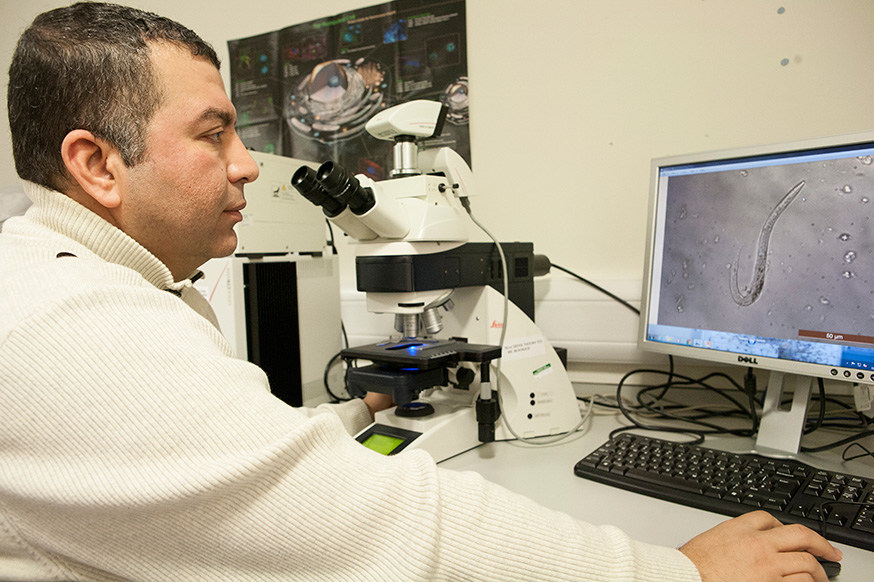
December 1, 2014, by Lindsay Brooke
Parasitic expert digs the dirt on the deadly parasitic that infected two kidney transplant patients
Halicephalobus gingivalis is a soil-borne, free-living nematode parasite. This saprophytic worm was first identified 1954 and since then sporadic cases have been reported as a cause of neurological disease in horses, in many countries including the UK, Japan, Canada, USA, Iceland, Italy, and France.
Dr Hany Elsheikha, an expert in parasitology at The School of Veterinary Medicine and Science, The University of Nottingham said: “This organism is generally not-pathogenic, but under certain conditions can infect humans and animals especially horses. Human infection has been rare but the outcome is always fatal meningoencephalomyelitis. This opportunistic parasite can cause disease only in immunocompromised individuals that is having impaired resistance. This includes cancer patients, organ transplant recipients and people with HIV/AIDS.”
Diseases that a healthy person can endure can be fatal to people with a weakened immune system.
He said: “The recent and tragic experience with fatality from Halicephalobus gingivalis was reported in Wales, where infected kidneys were transplanted to two recipients, reminds us of how a benign organism can transform into a deadly parasite when the body’s immune defences are crippled by the use of immunosuppressive drugs in patients receiving organ transplants.”
All cases of human or animal infections were found post mortem. Disease caused by H. gingivalis is difficult to treat due to the tendency of the parasite to migrate. Its high proliferative ability and its ability to reproduce parthenogenetically (i.e. without male nematodes) within the host, increases the parasitic burden and pathological damage in infected tissues.
Halicephalobus gingivalis is able to opportunistically colonise the host in different ways, such as oral infection via ingestion of contaminated food facilitated by lacerations of the buccal mucosa, trans-placental transmission from mare to foal, percutaneous through breaks in skin/open wounds, or through the respiratory tract.
Weather and climate changes may be affecting this parasite. Dr Elsheikha said: “Any climate change encouraging warm, moist conditions is likely to enhance environmental populations of the saprophytic nematode, with possible increased exposure of animals and human beings to potential infection. Therefore, this opportunistic parasite needs to be considered in the differential diagnosis of dysfunction of the CNS and other body organs in humans and horses.”
Dr Elsheikha is an eminent veterinary parasitologist with a well-regarded track-record of research and teaching in clinical and molecular Parasitology nationally and internationally. He was the first Board Certified Veterinary Parasitologist in the UK and the 6th worldwide, by examination. In the context of this emerging parasite, he recently published a challenging case of meningoencephalomyelitis caused by H. gingivalis in which a horse patient had a rapidly deteriorating clinical neurological course. This case highlighted the importance of considering parasitic infection in meningoencephalitis or meningoencephalomyelitis presenting atypically in horses. In this publication Dr Elsheikha also addressed the potential public health risk posed by this parasite to humans.
No comments yet, fill out a comment to be the first

Leave a Reply